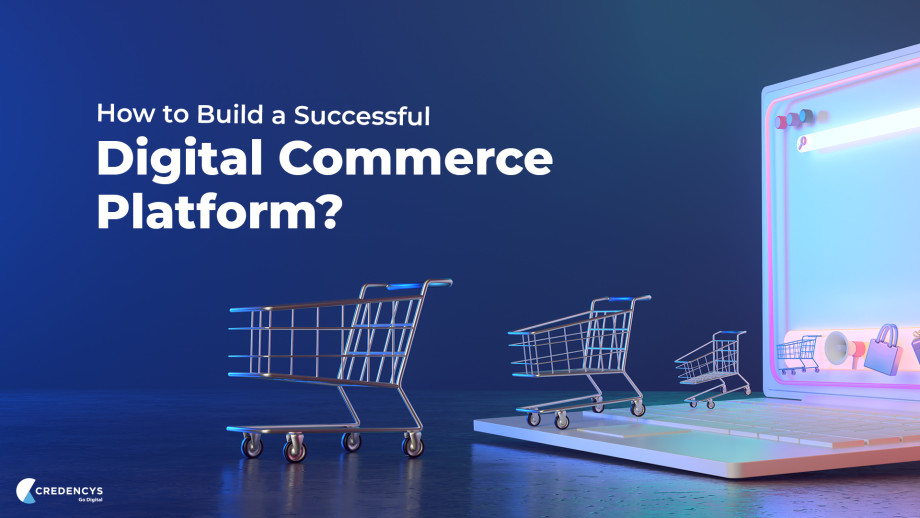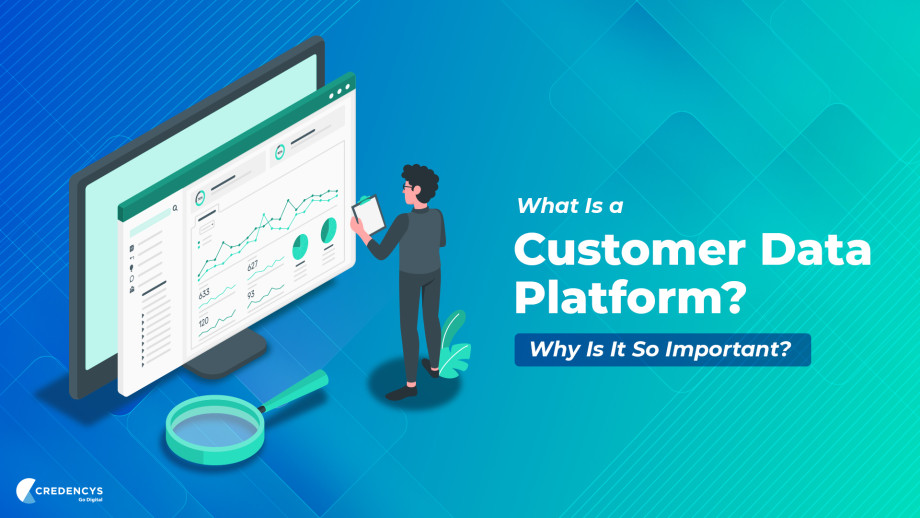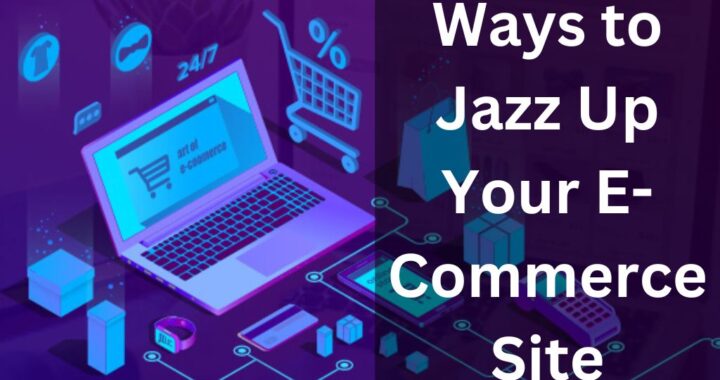How to Build a Successful Digital Commerce Platform?

Online shopping has gained a lot of importance in the last few years and now people prefer online shopping. The public can shop for their favourite product from any place at any time due to the better mobile networks and various handy devices like mobiles, tablets, Pads, etc. through the digital commerce platform.
For an enterprise, it is important to build a robust digital commerce platform that will help attract more customers.
Challenges of E-commerce Industry In 2022 & Solutions To Overcome
In the recent past, consumers worldwide rely more on online shopping, this opens more opportunity door for eCommerce businesses and also produces more challenges. This section elaborates on the most common challenges faced by eCommerce businesses in 2022 along with a solution to solve them in digital commerce platforms.
1. Cyber & Data Security:
Often eCommerce businesses face hard times in safeguarding their business data and their customer’s data. Security breaches may lead to severe damage to the eCommerce business by damaging the brand name among potential consumers.
Solution:
Make sure you prefer the right technology stack provider who offers excellent & vigilant backup services along with providing the latest security protocols for eCommerce websites.
2. Attracting Target Group Audience:
These days’ modern buyers have myriad options when it comes to shopping for their needs online. Also, they are now seeking more specific product details from respective brands before shopping. This cause more difficulties for brands to attract their target audience.
Solution:
Creating efficient digital marketing campaigns along with good data management software will helps marketers to attract more target audiences towards business. Utilizing the power of Omni-channel marketing attracts target audiences from multiple channels.
3. Maintaining Customer Loyalty:
For every eCommerce business, customer loyalty is very important. Acquiring a new customer could cost more than 5 times when compared with the cost of retaining an existing customer. As more eCommerce brands come online, it becomes a typical task for companies to retain old consumers.
Solution:
To maintain customer loyalty, companies may prefer to launch customer loyalty programs, conducting various programs to increase customer engagement with the brand through sending SMSs, Emails, Blogs, and so.
4. Managing Product Return & Refund Policies:
Maintaining a good customer experience becomes mandatory for all eCommerce businesses else, consumers will move to competitors. To avoid companies need to make sure on having flexible and comfortable product return & refund policies for their consumers.
Solution:
Having a good data management system will reduce the number of product returns and also has a flexible return & refund policy increases customer satisfaction.
5. Customer Support:
As the scale of eCommerce getting increase day by day, offering seamless customer support for such huge consumers becomes a bit difficult and also providing better support becomes essential to satisfy the uncomfortable consumers.
Solution:
Introduction chatbots powered by AI technology in customer support will offer faster customer support services by answering customer inquiries quickly and accurately.
Steps to build a successful eCommerce Platform

The different steps to get started and successful building of the digital commerce platform include:
1. Domain purchase:
The enterprise needs to select the domain name that perfectly matches and helps in identifying the brand. Several websites help in purchasing the domain name at an affordable cost like GoDaddy.
2. Finding a web developer:
A website is a crucial component required for the eCommerce platform. For launching the website in a very short period it is important to hire a professional website developer who will have the expertise in designing the website. Check for the previous website built by the developer to check his experience. It is important to understand the timeline required by the developer to design the website and make it live.
3. Completing paperwork for legitimate business:
The next important step involved getting the business registered and the vendor’s license. The local attorney can assist in creating cost-effective business and prevent any future hicups. It is important to have a strategic decision to decide which states to be included and check the requirements from the taxation department.
4. Selection of the eCommerce and website hosting platform:
There are several popular digital commerce platforms available that help in saving time and money. These include BigCommerce or WooCommerce, Shopify, etc. The developers are familiar with working with these eCommerce platforms as they have easy plugin integrations, payment processing, etc.
5. Theme selection matching the eCommerce vision:
The organization can select the theme based on the nature of its product. There are several applications like ThemeForest that have readymade theme templates and layouts. These provide a variety of website templates at an affordable cost. Getting the theme from these sites is better as compared to building the site from scratch as it will require more time, money, and effort.
6. Making the website live:
For starting the business, the next step is to make the website live before listing the products. The developer can create a homepage displaying the details about the business and contact details. This will help in establishing legitimacy while dealing with the vendors. It will also help in reaching out to bloggers and reporters which will help in gaining customers.
7. Help a reporter out (HARO):
HARO is the tool that helps in SEO and PR by generating exposure to the market. It provides journalists with a vast database of resources that gives opportunities to secure valuable media coverage. Signing up for this tool and using its resources will help in building credibility and establishing the media relationship. The different components involved in HARO include the timelines for response and have to be responded to immediately.
8. Pitchbox:
This tool helps in automating the outreach by creating real and person-to-person connections for business expansion. It helps in different aspects like prospecting, emailing, tracking, and managing the workflow. The PitchBox sends the initial pitch and also follows up if there is no response.
9. Personalized outreach:
For the growth of any business, it is important to provide a personalized relationship with the vendors as well as the media. This personalized relationship has a lot of value while implementing the SEO strategy. It is necessary to do background research while pitching the idea or story to the editors or reporters. If not made interesting it will remain unnoticed in their inbox or unread messages.
10. Getting a payment gateway:
Most of the payments on eCommerce platforms are made through payment gateways. If the business needs to include the option for the credit card payment, then needs to have a credit card processor. Other payment options like mobile payment or recurring bills need the help of other gateways with different options. The approvals for the credit card processor and payment gateways need to set up of secure checkout process on the website to make sure that the transactions are safe and the customer data is not compromised.
11. Product Catalog:
The business can start bolstering the SEO by the time the website developer is still working on the site. Certain things cannot be done till the website is up and functional. It needs all the product details to be uploaded to the final website. Once the website is at the final stage, the developer can set the google shopping campaign for ensuring that the product images populate and are easy notices by the relevant search keywords.
12. Order packaging, shipping, and storage options:
It is important to figure out before launching the website how the organization is going to store and ship the inventory. The organization should have the answers for the below listed questions.
- Is drop shipping preferable or storing the inventory at the warehouse?
- Will the product be shipped by UPS, USPS, FedEx, or a combination of these?
- How will the package be shipped?
- What is the size of the package?
- Are promotional materials included in the shipping? Are there any restrictions on any of the products in the catalog?
Tips to Develop a Successful Ecommerce strategy in 2022
The ultimate goal of an eCommerce campaign is to provide a better shopping experience for consumers instead of just allowing them to buy products. Here are some useful tips to build a successful eCommerce Strategy to follow in 2022
- Create a marketing campaign based on your brand’s unique value.
- Make sure your campaign covers your eCommerce goal and buyer’s personas.
- A campaign must deliver a high-quality and accurate product or service descriptions.
- Your campaign must delight your consumers through personalization.
- Utilize all the possible up-selling and cross-selling opportunities.
- Don’t hesitate to run re-targeting and re-marketing campaigns.
Conclusion
The online or digital market is the best place for selling the product as it can help in getting the right type of customers. To gain the confidence of the customers, it is important to create a branding strategy and follow it consistently for creating a sustainable business. There are several strategies listed above and the organization can select any based on their business needs to make their mark in this ever-growing competitive business world.

 Maximize Brand Reach: Top PR Strategies for All Platforms
Maximize Brand Reach: Top PR Strategies for All Platforms  Optimizing Your Compensation: The Role of a Personal Injury Attorney After an Accident
Optimizing Your Compensation: The Role of a Personal Injury Attorney After an Accident  Transforming Homes with Flooring Advantages in Lewisville, TX
Transforming Homes with Flooring Advantages in Lewisville, TX  4 Ways to Jazz Up Your E-Commerce Site
4 Ways to Jazz Up Your E-Commerce Site  Discover the Charm of Homes in Knightdale, NC
Discover the Charm of Homes in Knightdale, NC  Innovative Reporting: How to Utilize Power BI for Professional Paginated Reports
Innovative Reporting: How to Utilize Power BI for Professional Paginated Reports